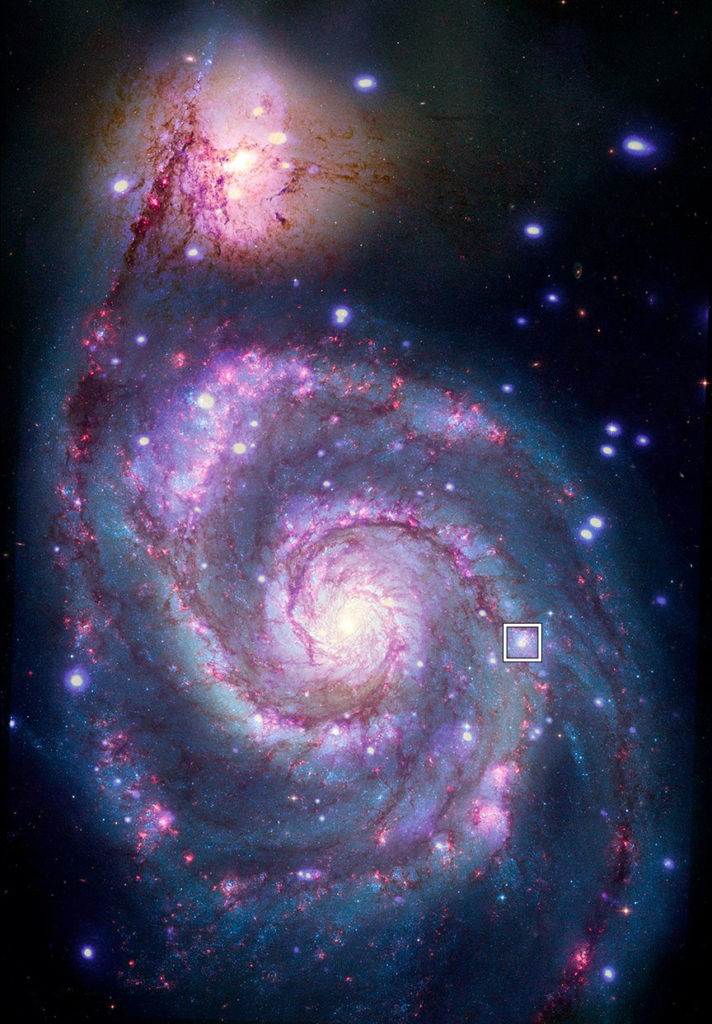Using NASA’s Chandra X-ray Observatory, astronomers have detected the first potential planet outside the Milky Way. This first planet is located in the majestic spiral galaxy Messier 51 (M51).
This exoplanet, which was found to transit a star outside our galaxy, sheds new light on the search for exoplanets at greater distances than ever before.
The distance of this first potential planet is about 28 million light-years away, meaning it would be thousands of times farther away than those in the Milky Way.
This new result is based on transits, events in which the passage of a planet in front of a star blocks some of the star’s light and produces a characteristic dip. The observation data has been obtained from both ground-based and space-based telescopes.
Rosanne Di Stefano of the Center for Astrophysics | Harvard & Smithsonian (CfA) in Cambridge, Massachusetts said, “We are trying to open up a whole new arena for finding other worlds by searching for planet candidates at X-ray wavelengths, a strategy that makes it possible to discover them in other galaxies.”

Because the region producing bright X-rays is small, a planet passing in front of it could block most or all of the X-rays, making the transit easier to spot because the X-rays can completely disappear. This could allow exoplanets to be detected at much greater distances than current optical light transit studies, which must be able to detect tiny decreases in light because the planet only blocks a tiny fraction of the star.
Using this method, astronomers detected the exoplanet candidate in a binary system called M51-ULS-1, located in M51. The X-ray transit they found using Chandra data lasted about three hours, during which the X-ray emission decreased to zero.
While this is an enticing study, still further data is required to verify the interpretation as an extragalactic exoplanet. One challenge is that the planet candidate’s large orbit means it would not cross before its binary partner again for about 70 years, thwarting any attempts for a confirming observation for decades.
Co-author Nia Imara of the University of California at Santa Cruz said, “Unfortunately to confirm that we see a planet, we would likely have to wait decades to see another transit. And because of the uncertainties about how long it takes to orbit, we wouldn’t know exactly when to look.”
Co-author Julia Berndtsson of Princeton University in New Jersey said, “We know we are making an exciting and bold claim, so we expect that other astronomers will look at it very carefully. We think we have a strong argument, and this process is how science works.”
For this study, the team looked for X-ray transits in three galaxies beyond the Milky Way galaxy, using Chandra and the European Space Agency’s XMM-Newton. Their search covered 55 systems in M51, 64 systems in Messier 101 (the “Pinwheel” galaxy), and 119 plans in Messier 104 (the “Sombrero” galaxy), resulting in the single exoplanet candidate described here.
Journal Reference:
- Rosanne Di Stefano et al. A possible planet candidate in an external galaxy detected through X-ray transit.
